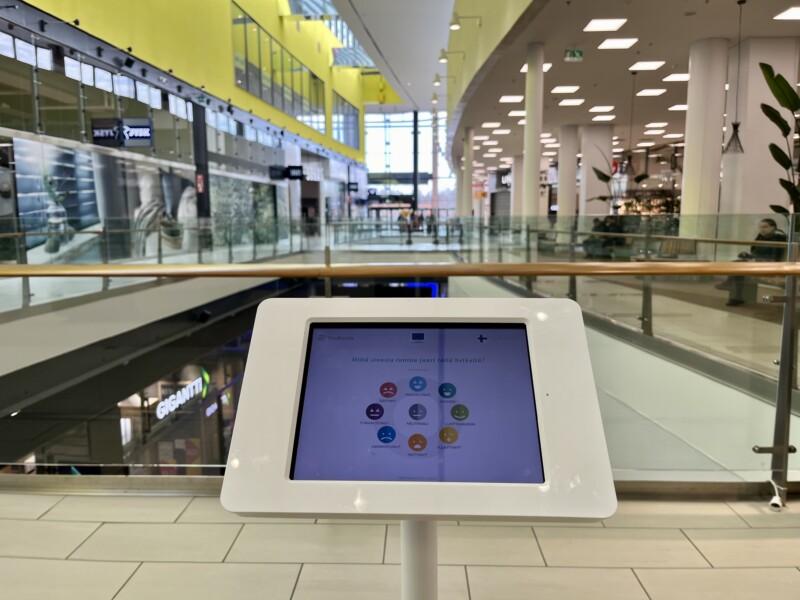There are as many approaches to customer experience as there are professionals in the field. But when talking about the cornerstones, we’re explicitly referring to operational customer experience and customer experience management. In other words, what are the basics building blocks of a customer experience strategy and how can you put them together to create something that your customers will benefit from?
Over the past 7 years, we’ve noticed that our customers are increasingly interested in learning more about customer experience on a strategic level rather than on a tactical level. This, of course, is a positive trend that we at Feedbackly welcome with open arms. Most industries are now catching on to this trend, with some innovators and some laggards. A whopping 89% of companies are competing mainly on the experiences that they create for their customers, not technology or any other part of the business. This means that your customer experience strategy is more important than ever. [pullquote]89% of companies are competing mainly on the experiences that they create for their customers, not technology or any other part of the business.[/pullquote]
Can customer experience be part of your value proposition? Some more traditional professionals would argue that customer experience is too abstract to be considered a differentiator in your business model. There is no consensus on this, however it’s important to remember that customer experience is more of a cultural characteristic than a business tactic. No competitor can ever reverse engineer or copy you in this regard. By using the right tools, fostering internal dialog, hiring the right people and providing the right training, you can create a culture of CX and strengthen your brand.
4 Steps To Create Happy Customers
Everything boils down on how you can create happier customers across all touchpoints. Research has shown that happiness and experience has a more significant effect on purchase behavior than price or product features. It is all about happy customers you can create. This is not an easy task. There is fierce competition within the experience realm – with most industries relying on frontline customer service representatives equipped with the latest automation tools to create customer happiness.
In the past, this task was much simpler. Most companies had one or two touchpoints with the customer, but in today’s digitalized world, the number of touchpoints is endless. So, we need to first take a look into how one actually creates happy customers. We’ve worked with thousands of companies and analyzed millions of data points to figure out a simple checklist. In order to create happy customers:
Meet those conditions, and you are better off than 99% of your competitors. To make something abstract and intangible more comprehensive and simple, we went through millions of data points to create a simple formula that can be used to create the happiest customers in the world. These cornerstones need to be the core foundation of your customer experience strategy.
1. Focus On The Customer Journey
To manage the customer experience you need to understand your customer’s emotions. Building a customer journey map can help to provide some insight about what your customers are thinking and at which stage. Customer journey maps can also help you to build and improve your marketing/sales funnel’s critical touchpoints. A good way to quickly use customer journey mapping to get a sense of where you stand is to use a ready-made template and fill in the gaps. Download our free customer journey map template to try for yourself.
Since there is no magical moment that defines the whole experience with a brand, brands must look at customer experience as the sum of interactions with a customer and understand that their loyalty is a direct result of all of these interactions.
For the customer journey to have a real impact within your organization, it should include the entirety of the customer’s lifetime. It should apply to the existing state of the customer experience (don’t include your future aspirations) and cover all of the interactions customers have with you, from the first Google ad they clicked to the cancellation request email they sent to support.
Your customer journey map must be the responsibility of the entire company rather than the responsibility of only one department. The sole purpose of its existence is to create a full clarity on customer experience and provide insight into the existing flow between the departments. It can also be a powerful tool to identify the bottlenecks that drag down your customer experience. Because of this, stakeholders from every department should be involved in designing your customer journey map – even traditionally non-customer facing departments.
2. Find The “Why”
Making changes in your business and trying to delight your customers based only on observing their moods or feelings is not enough. You need to find out why they feel how they feel. To do that… just ask. But when customer volumes are high, more complex patterns arise and just asking “why” becomes more complicated. To tackle that problem, we would need to use statistical analysis. Let’s consider two industry-standard analytical methodologies: Cross analysis and root cause analysis.
Many times they are relatively close to each other. After you have started collecting customer feedback, combining these two methods, you can easily find out why your customers behave how they do. In cross-analysis, you can see where, when, and from which part of the customer journey the scores come from.
Let’s talk about data. What kind of customer data do you need and in what format? Well, we’re firm believers that text-based customer feedback can and should be at the center of your customer experience strategy. You can collect customer feedback by using Feedbackly surveys and analyze this data directly inside the Feedbackly dashboard without having to use an external analysis tool.
Based on your analysis, you should get a good idea of which part of the customer journey needs the most attention. Root cause analysis tracks your customer sentiment with action so that you can link the explanation of the feedback score to the score itself. This way, you can easily see that fixing one specific problem would generate the happiest customer and more specifically, how to fix those issues as the analysis links the data to the “why” question.
3. Delight And Surprise
There is a dimension in customer experience that is often understood, even by some industry professionals. They often mix up “customer service” and “customer experience”, when, in reality these are two very different ideas. Many CX managers are so deep in their bubble of measuring service that they forget to ask “how can we encourage customers to come back, and how can we increase our upsell rate”.
Now, we’ve discovered that people who give you feedback are 17x times more prone to buy from you than people who don’t. So, to take advantage of this opportunity, you could automatically send a promo to those customers who give feedback, good or bad. Doing this, our customers have received up to 20% higher conversion from that segment than any other. At the same time, you will close the feedback loop, show you care and let them be heard.
This sounds fantastic, but how do we put it together in practice? It sounds crazy, but the speed at which you deliver on promises is the backbone of customer delight. [pullquote]It sounds crazy, but the speed at which you deliver on promises is the backbone of customer delight.[/pullquote] The only way to do this is to create automation through integrations. For example, when collecting feedback on multiple channels, you can use root cause analysis powered by AI to determine which responses are urgent, which ones are from customers at risk of churning, and which are from those who are ready to be upsold to.
Based on that, you can send those customer responses to the right department, person or CRM where the delegation can be done automatically. Neat, right? In each of our customer cases, the result has been around a 20% in customer happiness and a 10% increase in instant upsales.
4. Treat Your Employees Like Gold
I will keep this short and sweet. Happy employees create happy customers. Happy employees also create other happy employees. So keep your employees happy! The equation is simple, if your employees are not professional, are in a bad mood, don’t enjoy what they do or feel that the work is not their calling, it is virtually impossible to create world-class customer experiences. We see an obvious correlation between enhancing the employee experience and improvement in customer experience. We’ve written some blog posts dedicated to the topic of employee experience, and will continue to explore trends in this specific area of experience management. Read more about EX:
4 Ways To Improve Employee Experience For Startups In 2020
Use Feedback To Boost Your Employee Experience
In The End
Experience management – whether it comes from the perspective of employees, customers, or leads is complicated. That’s why it’s often a good exercise to break these concepts down into their core fundamental elements. Whether you work for a large corporation or a small startup, the elements remain the same – that’s the beautiful thing about experiences, their universality. Find yourself a dedicated experience manager to take care of all things experience related, and most importantly, make sure they have the passion and drive to never settle for mediocre.




